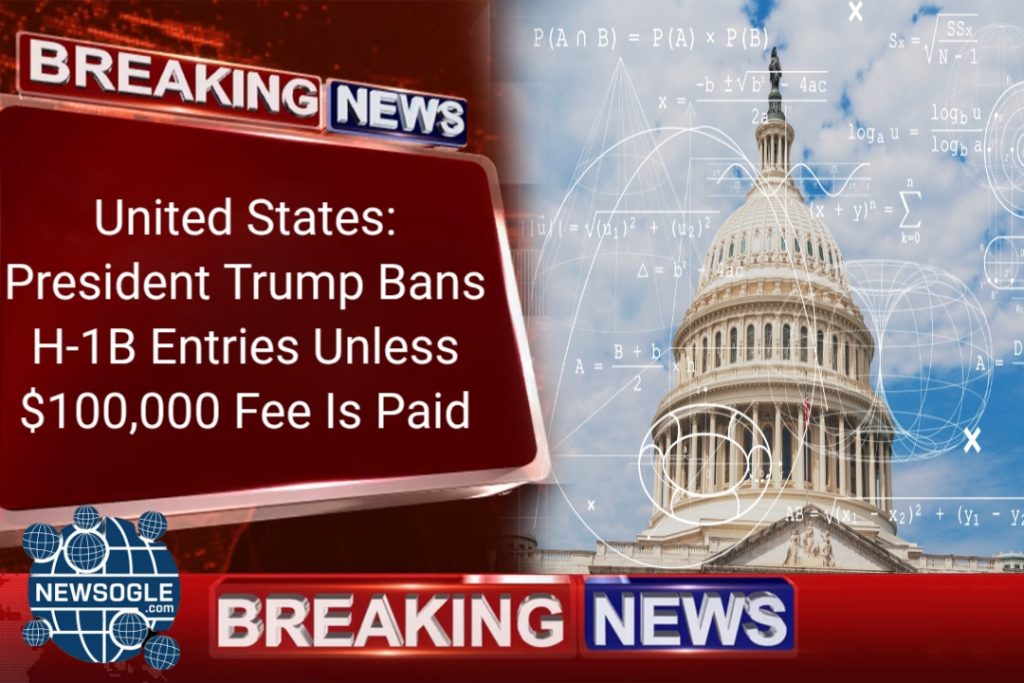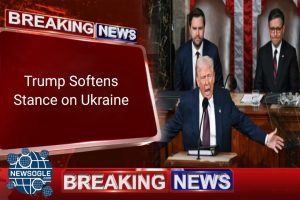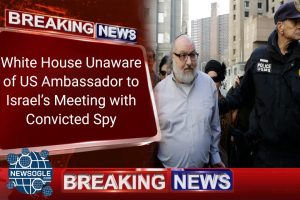
In a move that has ignited fierce debate and sent ripples of uncertainty throughout the global technology and immigration sectors, a recent presidential proclamation has introduced a staggering $100,000 fee for H-1B visa entries. The directive, which took effect at 12:01 a.m. EDT on Sunday, September 21, marks a dramatic departure from decades of U.S. immigration policy and poses a formidable challenge to companies, especially those in the tech industry, that have long relied on the program to attract and retain highly skilled foreign talent. This unprecedented fee, coupled with other proposed changes to prevailing wage standards, is being touted by the administration as a means to protect American jobs and ensure only the “best and brightest” are brought into the country. However, critics are sounding the alarm, warning that the policy could cripple innovation, drive talent overseas, and effectively turn the H-1B visa into a “luxury work permit” accessible only to a select few.
The proclamation, signed late Friday, aims to reshape the landscape of high-skilled immigration by imposing a new financial barrier on employers. The H-1B visa, designed to allow U.S. employers to temporarily employ foreign workers in specialty occupations, has historically been a lifeline for companies struggling to fill critical roles in science, technology, engineering, and math (STEM). For decades, the program has been a cornerstone of the U.S. technology sector, enabling giants like Amazon, Microsoft, and Google to hire a global workforce and remain competitive. The new $100,000 fee, which comes on top of existing costs, dramatically raises the stakes for companies seeking to sponsor foreign employees.
The implications are far-reaching. For a large technology company that sponsors hundreds or even thousands of H-1B workers annually, this new fee could translate into billions of dollars in additional expenses. This financial burden is expected to have a disproportionate impact on smaller businesses and startups, which may find the cost prohibitive. The move could force these companies to scale back their hiring of foreign talent or, in some cases, to abandon the H-1B program altogether. The long-term consequences could be a less dynamic and less competitive tech ecosystem, with innovation and job creation concentrated in the hands of a few wealthy corporations.
The Administration’s Rationale: “Hire American” and “Protect Wages”
The administration has framed the new fee as a critical measure to protect American workers and ensure a fair labor market. White House officials argue that the H-1B program has been exploited by some companies to hire foreign workers at lower salaries, displacing American workers and driving down wages. By introducing the $100,000 fee and directing the Department of Labor (DOL) to raise prevailing wage levels, the administration aims to ensure that H-1B workers are truly highly skilled and not being hired for roles that could be filled by qualified U.S. citizens.
An administration official stated that the new policy will “ensure that the people they’re bringing in are actually very highly skilled and that they’re not replaceable by American workers.” The official added that this change would protect American workers while ensuring companies have a pathway to hire truly “extraordinary people.” This perspective resonates with critics of the H-1B program, who have long argued that it has been a conduit for companies to undercut U.S. wages and outsource jobs.
The new policy also appears to be a response to the perceived misuse of the H-1B lottery system. Critics have argued that some staffing and outsourcing firms have filed a disproportionate number of applications to increase their chances of winning a visa, effectively “gaming” the system. The new fee, supporters believe, will serve as a powerful deterrent to this practice, forcing companies to be more selective in their applications and ensuring that the program is used as intended—to fill high-skilled, specialized jobs.
Tech Industry Backlash and Legal Challenges
Despite the administration’s stated goals, the response from the technology industry, business groups, and immigration advocates has been overwhelmingly negative. Tech leaders and industry representatives have voiced concerns that the new fee will have a chilling effect on innovation and will make it significantly harder for U.S. companies to compete in the global marketplace.
Stuart Anderson, executive director of the National Foundation for American Policy, a nonpartisan research group, warned that the policy could backfire, incentivizing U.S. companies to shift research and development jobs overseas. He also highlighted the potential for the fee to discourage international students from pursuing higher education in the United States. “If there’s no opportunity to work in the U.S., it’s much less likely they’ll enroll in U.S. programs,” Anderson told CBS News. This could lead to a brain drain, with the world’s most talented scientists and engineers choosing to study and work in other countries.
Legal experts are also questioning the legality of the proclamation. They argue that the president lacks the legal authority to impose such an exorbitant fee, as visa fees are typically set by Congress or through a formal rulemaking process that involves public notice and comment. Aaron Reichlin-Melnick, a senior fellow at the American Immigration Council, stated that the president has “zero legal authority to impose a $100,000 fee on visas.” He emphasized that the only authority granted to the executive branch is to charge fees to recover the cost of processing applications. This new policy is almost certain to face a swift and vigorous legal challenge in federal court.
Impact on H-1B Workers and Future Talent
Beyond the corporate and legal implications, the new fee will have a profound impact on the individual H-1B visa holder. For many, a career in the United States has been a dream and a pathway to professional growth. The new fee could make that dream unattainable. Early-career professionals, recent graduates, and those from industries with lower salaries may find that U.S. work opportunities have vanished, as employers may reserve H-1Bs for only the most critical or senior roles.
The proclamation also raises questions about the future for current H-1B holders. While the directive does not immediately affect existing visas, future extensions, transfers, or renewals could be subject to the new rules. This uncertainty creates a climate of fear and anxiety for thousands of individuals who have built their lives and careers in the United States.
The changes also highlight the ongoing debate about the nature and purpose of the H-1B program. While supporters, including tech CEOs, argue that it is essential for bringing in highly skilled workers to fill talent gaps, critics contend that the program has been abused by some companies to suppress wages and displace American workers. The new fee is seen by some as a blunt but effective tool to address these concerns, while others view it as an overreach that will harm the U.S. economy and its global standing.
A New Era of Immigration Policy
This is not the first time the H-1B program has been a target of the administration. In recent years, the administration has introduced several regulations aimed at limiting access to the visa and favoring higher-paying employers. However, many of these regulations were blocked in federal court. The new fee, if it survives a legal challenge, would represent the most significant shift in U.S. employment immigration policy in years.
The policy also comes alongside the introduction of a separate $1 million “gold card” visa, a pathway to U.S. citizenship for wealthy individuals. For companies, sponsoring an employee for this visa would cost $2 million. This move, which parallels the H-1B fee, underscores a broader shift in immigration policy towards a system that favors wealth and access over skills and qualifications.
In the long run, the new H-1B visa fee could lead to a rethinking of global mobility programs. Companies that rely on foreign talent may be forced to explore alternative visa pathways, such as the O-1 visa for individuals with “extraordinary ability” or the EB-1A visa for “priority workers.” While these visas have more stringent requirements, they offer a direct path to legal permanent residency and are not subject to the H-1B lottery. However, these alternatives are not a viable option for most foreign workers and will not solve the broader challenge of attracting and retaining a diverse and talented workforce.
The coming weeks and months will be critical as the legal challenges to the new proclamation unfold. The outcome of these challenges will determine the future of the H-1B visa program and could have a lasting impact on the U.S. economy and its position as a global leader in technology and innovation.Image of the U.S. Capitol Building
SEO Keywords:
- H-1B visa fee
- H-1B visa changes
- Trump H-1B
- H-1B proclamation
- H-1B visa $100,000
- US immigration news
- Tech industry immigration
- H-1B legal challenges
- US visa policy
- Foreign worker visa
Conclusion
The new H-1B visa fee has created a whirlwind of discussion and uncertainty. While the administration frames the policy as a way to protect American jobs and wages, critics argue that it will have a detrimental effect on the U.S. technology sector and its ability to attract the world’s best talent. The coming legal battles will be pivotal in determining the fate of the H-1B program and, by extension, the future of U.S. high-skilled immigration.





